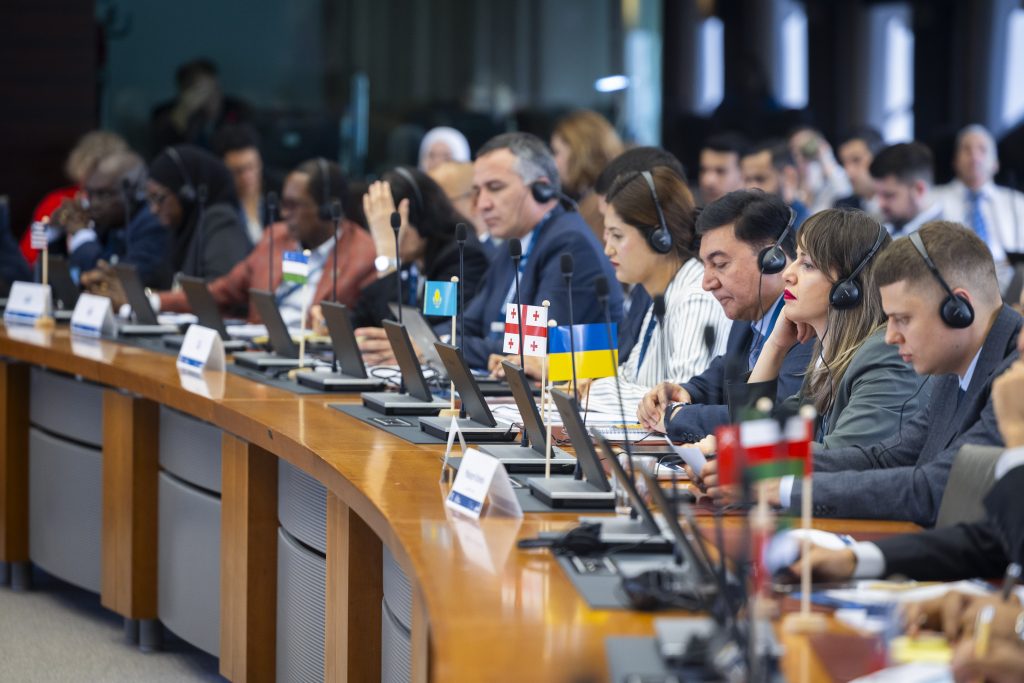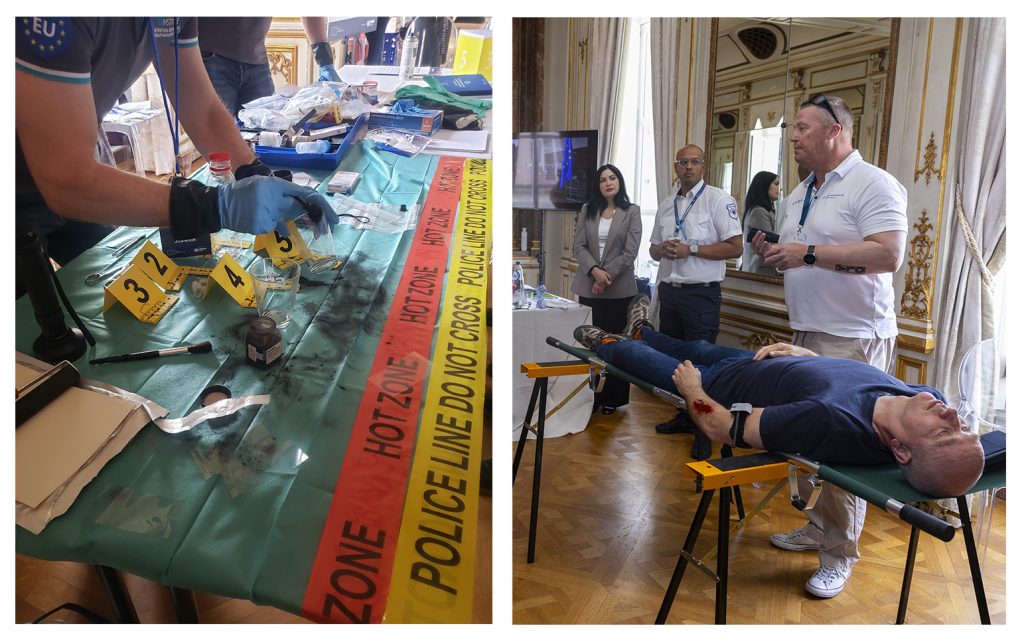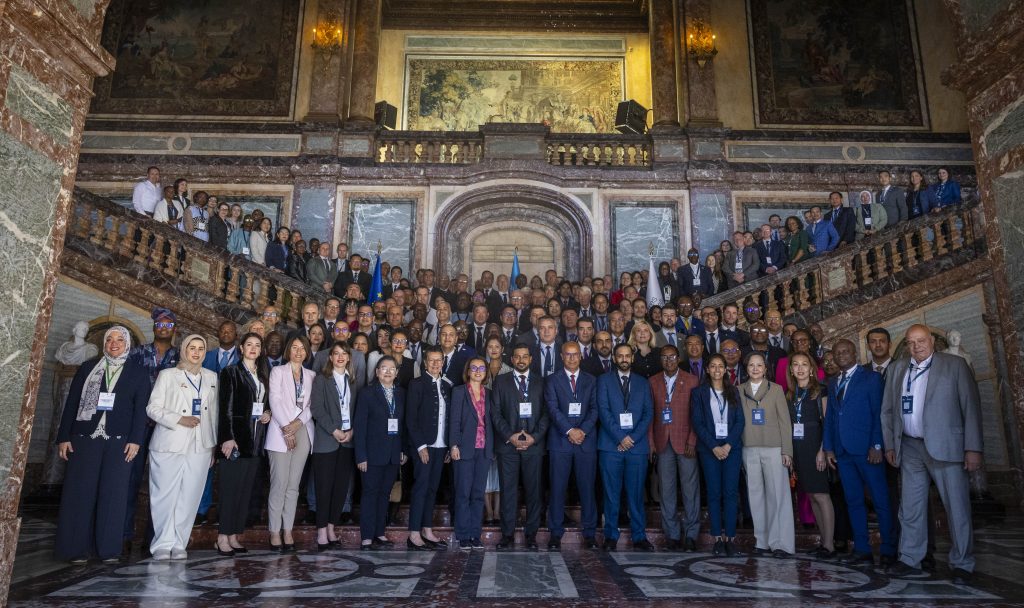by NANNETTE CAZAUBON, European News Journal, Paris

Throughout history, chemical, biological, radiological and nuclear (CBRN) materials have enabled medical advances, powered industry, and supported modern agriculture, energy, and scientific discovery.
However, this potential, which drives progress, can also pose serious risks, such as accidental chemical leaks, deliberate biological attacks, radiological exposure, and the uncontrolled spread of emerging diseases. Their impacts often cross boundaries and can have far-reaching consequences affecting health, the environment, economies, and security across borders and sectors.
In addition, conflict and war exacerbate these threats, as has been the case in Ukraine since the Russian invasion, where CBRN risks have intensified, from threats to critical infrastructure to the safety of frontline personnel. Finally, scientific innovations, global mobility, urbanisation and environmental pressures mean that CBRN risks are constantly evolving.
A unique model to mitigate CBRN risks
Mitigating CBRN risks is not just about reacting to emergencies. It is about strengthening every phase of the risk cycle: from prevention and protection to preparedness, detection and response. This is precisely what the European Union CBRN Risk Mitigation Centres of Excellence (EU CBRN CoE) Initiative has been doing for 15 years.
The CBRN CoE Initiative represents the EU’s largest civilian external security programme. Led by the by the European Commission’s Service for Foreign Policy Instruments (FPI) , in close coordination with the European External Action Service (EEAS), the initiative is supported by the European Commission’s Joint Research Centre (JRC) providing technical support to partner countries and the United Nations Interregional Crime and Justice Research Institute (UNICRI) ensuring a coherent and effective national, regional and international cooperation. Other relevant international and/or regional organisations and experts also contribute to the initiative. |
Established in 2010, the EU CBRN CoE Initiative has since become the largest global platform for voluntary cooperation in CBRN risk mitigation, having cultivated a unique network of national teams, regional hubs, and global partnerships over the past 15 years, which together form the backbone of CBRN risk mitigation. Encompassing 63 partner countries organised into eight regions with a liaison office (Regional Secretariat) in each of them and a National Focus Point (NFP) in each country, the EU CBRN CoE network has funded more than 110 projects.
“What began as a strategic vision has grown into the world’s largest platform for voluntary cooperation on CBRN.” Maria Rosa Sabbatelli, Head of Unit, Service for Foreign Policy Instruments (FPI)
What is unique about this initiative is the introduction of a new cooperation model: instead of seeking one-size-fits-all solutions, it promotes national ownership and regional dialogue. This means that the partner countries determine their own priorities in National Action Plans (NAP) and are supported by tailored projects, regional networks, and expert advice. Cross-border cooperation and the establishment of Regional Action Plans (RAP) are widely encouraged.
15 years of success celebrated in Brussels
The number of partner countries and projects funded are proof of success and were a reason to celebrate. In mid-May 2025, more than 190 participants from the partner countries, EU institutions, UNICRI and various strategic partners came together in Brussels to mark the EU CBRN CoE’s 15th anniversary.
Having regularly covered the progress of this initiative in my reports over the last few years, I had the opportunity to participate in the two-day conference, which was not only a fitting tribute to the journey of the EU CBRN CoE Initiative, but also showed that it has now turned resolutely to the future.
Taking place in the magnificent historic Egmont Palace, the meeting featured high-level speakers and thematic panel discussions, a historical walk through 15 years of CBRN success stories, followed by a forward-looking world café session on strengthening the CoE network, and completed by expert presentations on future trends and challenges.
From disease detection to smuggling of CBRN material
For many participants, including myself, one of the highlights was the walk through history, an impressive interactive exhibition showcasing 15 years of the EU CBRN CoE’s impactful projects and bringing to life how the CoE network has translated strategy into action and resilience on the ground.

During our tour of the various stands, we discovered CBRN threats I was not yet fully familiar with, such as the smuggling of CBRN materials across borders or criminals lacing playing cards with radioactive material to win illegal bets. We also learned about early disease detection to prevent pandemics and observed how to prevent contamination of evidence at a crime scene with CBRN material or how medical teams work in the event of a CBRN attack. In addition, the historical walk showcased the various training measures implemented over the last decade in the various regions and partner countries of the EU CBRN CoE Initiative.
Modern technologies and future challenges
After this look back, the second day of the meeting was turned to the future. Participants discussed emerging priorities including artificial intelligence (AI), public-private partnerships and knowledge management. The power of space-based technologies to monitor remote threats, the benefits and risks of AI in decision-making, the implications of a nuclear energy renaissance, and the urgency of updating strategic trade controls for dual-use technologies were discussed with experts. The message was clear: technology is advancing fast, and preparedness must keep pace.
Maria Rosa Sabbatelli, Head of FPI’s Unit for Global and Transregional Threats and Challenges concluded the meeting by stating that the CBRN CoE was much more than just a mechanism for technical cooperation. “It is a platform for trust building, knowledge sharing, but also strategic dialogue at both regional and global levels. Together we can continue to ensure that CBRN risks are effectively understood, mitigated and managed for the safety and security of all,” she added.
A well-prepared and lively conference, a wide variety of motivated participants, an ambitious programme and forward-looking results – that’s how I would sum up the anniversary event. The inspiring, rich discussions at the meeting will now have to be translated into concrete actions.


